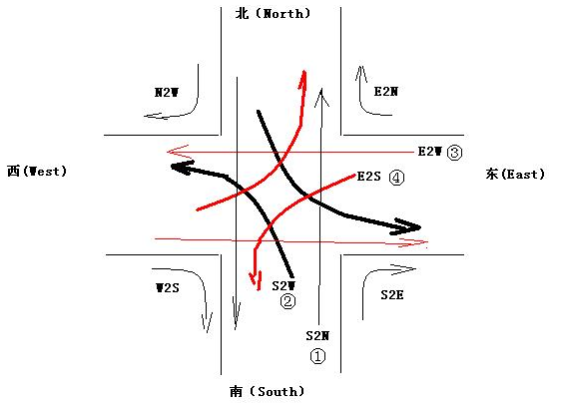Detailed introduction to the use of enumerations in java
Enumeration features
1. Using enum to define an enumeration class inherits the java.lang.Enum class by default instead of inheriting the Object class. Among them, the java.lang.Enum class implements two interfaces, java.lang.Serializable and java.lang.Comparable
2. The constructor of the enumeration class can only use the private access modifier, if the access control of its constructor is omitted symbol, the private modification is used by default;
3. All instances of the enumeration class must be explicitly listed in the enumeration class, otherwise this enumeration class will never be able to generate instances. When these instances are listed, the system automatically adds public static final modifications without the need for programmers to add them explicitly.
public enum Week {
MON{
public String toLocaleString(){
return "星期一";
}
},TUES{
public String toLocaleString(){
return "星期二";
}
},WEB{
public String toLocaleString(){
return "星期三";
}
},THUR{
public String toLocaleString(){
return "星期四";
}
},FRI{
public String toLocaleString(){
return "星期五";
}
},SAT{
public String toLocaleString(){
return "星期六";
}
},SUN{
public String toLocaleString(){
return "星期日";
}
};
public abstract String toLocaleString();
}Traversal of enumerations
public class EnumTest {
public static void main(String[] args){
for(Week w:Week.values()){
System.out.println(w);
}
}
}Common methods of enumerations
int compareTo method
String name() returns the name of the enumeration instance
int ordinal() returns the enumeration value in the enumeration Index
String toString() returns the instance name of the enumeration which is more commonly used than name
public static valueOf()
public class EnumTest {
public static void main(String[] args){
Week day =Week.FRI;
System.out.println(day);//FRI
System.out.println(day.name());//FRI
System.out.println(day.ordinal());//4
System.out.println(Week.valueOf("SUN").toLocaleString());//星期日
System.out.println(Week.values().length);//7 获取枚举长度
}
}Constructor of the enumeration
public enum Gender {
MALE("男"),FEMALE("女");
private String name;
private Gender(String name){
this.name =name;
}
public String getName(){
return this.name;
}
public String toString(){
String name = null;
switch(this){
case MALE:
name="男";
break;
case FEMALE:
name="女";
break;
}
return name;
}
}Comprehensive application example of the enumeration: traffic light

public enum Lamp {
/*每个枚举元素各表示一个方向的控制灯*/
S2N("N2S","S2W",false),S2W("N2E","E2W",false),E2W("W2E","E2S",false),E2S("W2N","S2N",false),
/*下面元素表示与上面的元素的相反方向的灯,它们的“相反方向灯”和“下一个灯”应忽略不计!*/
N2S(null,null,false),N2E(null,null,false),W2E(null,null,false),W2N(null,null,false),
/*由南向东和由西向北等右拐弯的灯不受红绿灯的控制,所以,可以假想它们总是绿灯*/
S2E(null,null,true),E2N(null,null,true),N2W(null,null,true),W2S(null,null,true);
private Lamp(String opposite,String next,boolean lighted){
this.opposite = opposite;
this.next = next;
this.lighted = lighted;
}
/*当前灯是否为绿*/
private boolean lighted;
/*与当前灯同时为绿的对应方向*/
private String opposite;
/*当前灯变红时下一个变绿的灯*/
private String next;
public boolean isLighted(){
return lighted;
}
/**
* 某个灯变绿时,它对应方向的灯也要变绿
*/
public void light(){
this.lighted = true;
if(opposite != null){
Lamp.valueOf(opposite).light();
}
System.out.println(name() + " lamp is green,下面总共应该有6个方向能看到汽车穿过!");
}
/**
* 某个灯变红时,对应方向的灯也要变红,并且下一个方向的灯要变绿
* @return 下一个要变绿的灯
*/
public Lamp blackOut(){
this.lighted = false;
if(opposite != null){
Lamp.valueOf(opposite).blackOut();
}
Lamp nextLamp= null;
if(next != null){
nextLamp = Lamp.valueOf(next);
System.out.println("绿灯从" + name() + "-------->切换为" + next);
nextLamp.light();
}
return nextLamp;
}
}The above is the detailed introduction to the use of enumerations in Java. For more related content, please pay attention to the PHP Chinese website (m.sbmmt.com)!

Hot AI Tools

Undress AI Tool
Undress images for free

Undresser.AI Undress
AI-powered app for creating realistic nude photos

AI Clothes Remover
Online AI tool for removing clothes from photos.

Clothoff.io
AI clothes remover

Video Face Swap
Swap faces in any video effortlessly with our completely free AI face swap tool!

Hot Article

Hot Tools

Notepad++7.3.1
Easy-to-use and free code editor

SublimeText3 Chinese version
Chinese version, very easy to use

Zend Studio 13.0.1
Powerful PHP integrated development environment

Dreamweaver CS6
Visual web development tools

SublimeText3 Mac version
God-level code editing software (SublimeText3)
 edge pdf viewer not working
Aug 07, 2025 pm 04:36 PM
edge pdf viewer not working
Aug 07, 2025 pm 04:36 PM
TestthePDFinanotherapptodetermineiftheissueiswiththefileorEdge.2.Enablethebuilt-inPDFviewerbyturningoff"AlwaysopenPDFfilesexternally"and"DownloadPDFfiles"inEdgesettings.3.Clearbrowsingdataincludingcookiesandcachedfilestoresolveren
 Deploying a Java Application to Kubernetes with Docker
Aug 08, 2025 pm 02:45 PM
Deploying a Java Application to Kubernetes with Docker
Aug 08, 2025 pm 02:45 PM
Containerized Java application: Create a Dockerfile, use a basic image such as eclipse-temurin:17-jre-alpine, copy the JAR file and define the startup command, build the image through dockerbuild and run locally with dockerrun. 2. Push the image to the container registry: Use dockertag to mark the image and push it to DockerHub and other registries. You must first log in to dockerlogin. 3. Deploy to Kubernetes: Write deployment.yaml to define the Deployment, set the number of replicas, container images and resource restrictions, and write service.yaml to create
 How to implement a simple TCP client in Java?
Aug 08, 2025 pm 03:56 PM
How to implement a simple TCP client in Java?
Aug 08, 2025 pm 03:56 PM
Importjava.ioandjava.net.SocketforI/Oandsocketcommunication.2.CreateaSocketobjecttoconnecttotheserverusinghostnameandport.3.UsePrintWritertosenddataviaoutputstreamandBufferedReadertoreadserverresponsesfrominputstream.4.Usetry-with-resourcestoautomati
 VS Code shortcut to focus on explorer panel
Aug 08, 2025 am 04:00 AM
VS Code shortcut to focus on explorer panel
Aug 08, 2025 am 04:00 AM
In VSCode, you can quickly switch the panel and editing area through shortcut keys. To jump to the left Explorer panel, use Ctrl Shift E (Windows/Linux) or Cmd Shift E (Mac); return to the editing area to use Ctrl ` or Esc or Ctrl 1~9. Compared to mouse operation, keyboard shortcuts are more efficient and do not interrupt the encoding rhythm. Other tips include: Ctrl KCtrl E Focus Search Box, F2 Rename File, Delete File, Enter Open File, Arrow Key Expand/Collapse Folder.
 How to use a while loop in Java
Aug 08, 2025 pm 04:04 PM
How to use a while loop in Java
Aug 08, 2025 pm 04:04 PM
AwhileloopinJavarepeatedlyexecutescodeaslongastheconditionistrue;2.Initializeacontrolvariablebeforetheloop;3.Definetheloopconditionusingabooleanexpression;4.Updatethecontrolvariableinsidethelooptopreventinfinitelooping;5.Useexampleslikeprintingnumber
 Fixed: Windows Update Failed to Install
Aug 08, 2025 pm 04:16 PM
Fixed: Windows Update Failed to Install
Aug 08, 2025 pm 04:16 PM
RuntheWindowsUpdateTroubleshooterviaSettings>Update&Security>Troubleshoottoautomaticallyfixcommonissues.2.ResetWindowsUpdatecomponentsbystoppingrelatedservices,renamingtheSoftwareDistributionandCatroot2folders,thenrestartingtheservicestocle
 How to use Mockito for mocking in Java?
Aug 07, 2025 am 06:32 AM
How to use Mockito for mocking in Java?
Aug 07, 2025 am 06:32 AM
To effectively use Mockito for Java unit testing, you must first add Mockito dependencies, add mockito-core dependencies in the Maven project, and add testImplementation'org.mockito:mockito-core:5.7.0' to the Gradle project; then create mock objects through @Mock annotation (combined with @ExtendWith(MockitoExtension.class)) or mock() method; then use when(...).thenReturn(...) and other methods to stub the method behavior of the mock object, or you can also configure different
 What is the process of serialization for a Java object?
Aug 08, 2025 pm 04:03 PM
What is the process of serialization for a Java object?
Aug 08, 2025 pm 04:03 PM
Javaserializationconvertsanobject'sstateintoabytestreamforstorageortransmission,anddeserializationreconstructstheobjectfromthatstream.1.Toenableserialization,aclassmustimplementtheSerializableinterface.2.UseObjectOutputStreamtoserializeanobject,savin







